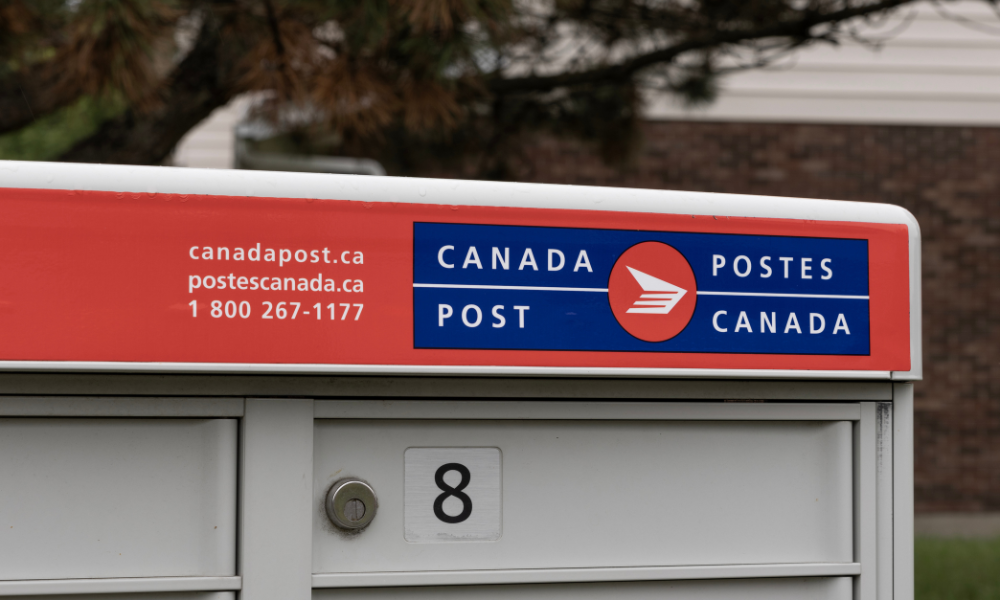
'It's a corporate-wide restructuring,' says spokesperson, citing 'unfortunate reality' of financial challenges

Canada Post is laying off nearly 50 managers as part of a cost-cutting initiative following years of financial losses, according to a recent report.
The layoffs include three senior executives who were fired last month, among them the company’s chief financial officer. Two vacant executive positions have also been eliminated, reducing senior management by 20 per cent, reported CBC.
Nearly 50 managers are also receiving layoff notices this week, according to the report.
"It's a corporate-wide restructuring," said Canada Post spokesperson Jon Hamilton in the report. "It's an unfortunate reality based on the financial challenges we face, but it's also something that needs to be done."
The affected positions include management roles in Ottawa, Toronto, Montreal, and other regions. Hamilton stated that the restructuring is intended to “streamline some processes, help us to make decisions faster and help us to prepare for what's going to be a challenging year."
Recently, Telecommunications giant TELUS announced a new wave of voluntary separations offered to about 700 workers, according to the Canadian Union of Public Employees (CUPE).
Canada Post has about 50,000 full-time employees, and roughly five per cent are management, amounting to around 2,500 people, according to the CBC report.
According to the corporation's 2022 Annual Report, it had nearly 68,000 workers made up of full-time and part-time employees, including temporary, casual and term employees.
"I have no indication of how many managers they need. What I do know is that there are a lot of them. They get paid a lot of money," Hamilton said.
Hamilton stated that additional management layoffs remain a possibility, though they would be considered a last resort. Canada Post has maintained a hiring freeze for managers since the summer and is largely refraining from filling non-union positions left vacant by departing employees. The company has also reduced discretionary spending, including travel.
Meanwhile, no unionized employees have been affected by the cuts. And the Canadian Union of Postal Workers (CUPW) has argued that Canada Post has too many management positions that are not directly involved in daily operations.
"I have no indication of how many managers they need. What I do know is that there are a lot of them. They get paid a lot of money," said Jim Gallant, a national negotiator with CUPW, in the report.
Meanwhile, Gallant says some 3,000 front-line positions — like mail sorters and carriers — have been eliminated since 2006.
Canada Post – which operates without taxpayer funding and is expected to be self-sustaining – has reported more than $3 billion in losses since 2018, according to CBC.
It previously warned that it would run out of money this spring due to its "critical" financial situation.
In December, a nationwide strike shut down postal services for a month, impacting Canada Post during its busiest period of the year. At that time, the federal government provided a $1 billion loan last month to help cover operational costs for the 2025-26 fiscal year.
"This is 'keep the lights on' money," Hamilton said. "It's a short-term fix. It provides a financial bridge to get us to the types of changes that we need."
Canada Post operations resumed Dec. 17, nearly a month since the work stoppage began.
Decline in letter mail volume: The traditional reliance on letter mail has diminished due to digital communication methods. This decline has eroded a primary revenue source, necessitating a shift towards parcel delivery and other services.
Financial sustainability: Canada Post has reported substantial financial losses in recent years, with a loss before tax of $748 million in 2023. The corporation acknowledges the need for significant changes to modernize and preserve the national postal service.
Labour relations and workforce adaptation: Negotiations with the Canadian Union of Postal Workers (CUPW) have highlighted challenges related to wages, job security, and adapting to evolving delivery models. Strikes and labor disputes have disrupted services, emphasizing the need for collaborative solutions.
Competition in parcel delivery: The surge in e-commerce has increased parcel volumes, but also intensified competition from private couriers. Canada Post must adapt its delivery models to meet customer expectations for speed and reliability.
Regulatory constraints: The regulatory framework governing Canada Post has remained largely unchanged since 1985, despite significant shifts in the postal environment. Modernizing these regulations is crucial to provide the flexibility needed to meet the evolving needs of Canadians.